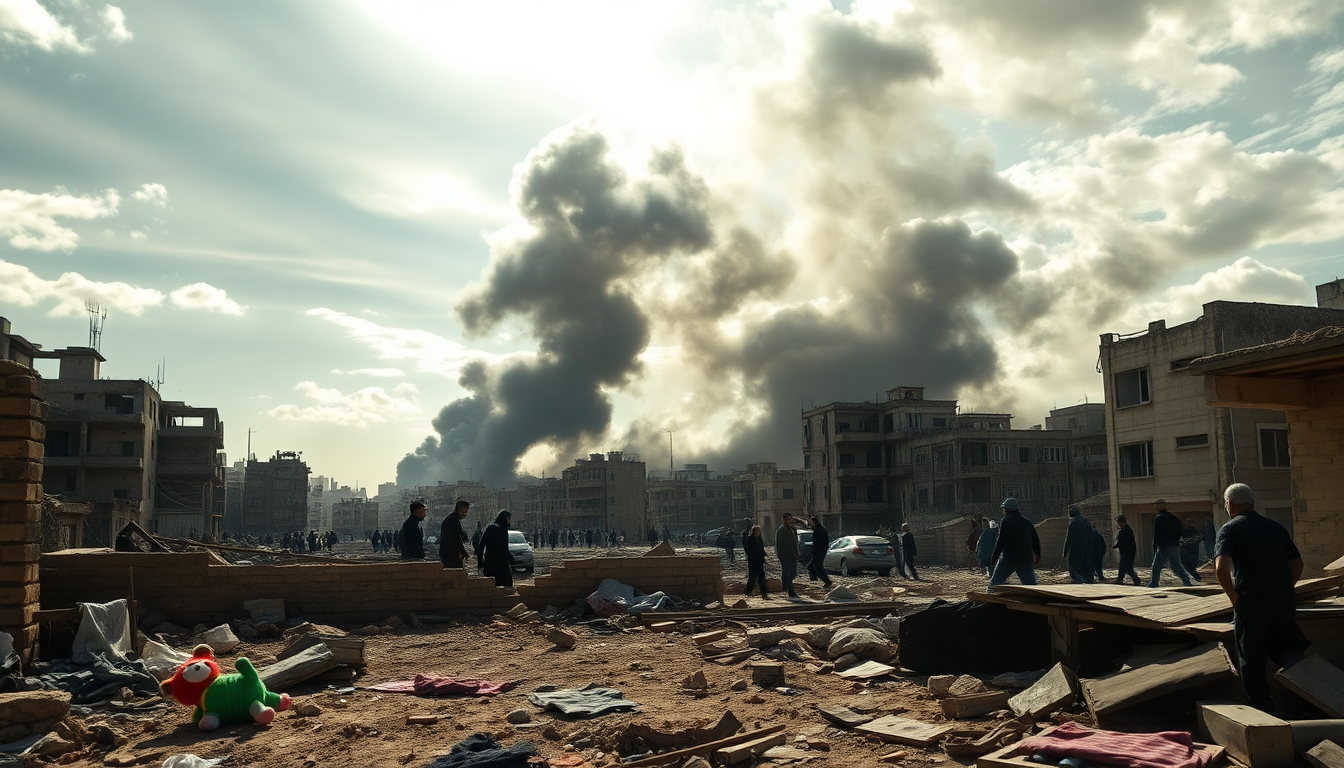Table of Contents
The conflict in Gaza City has escalated to alarming levels, with Israel ramping up its military operations in densely populated areas. This latest phase of the offensive raises serious humanitarian concerns. Reports suggest that nearly one million Palestinians may face forced displacement. The reality for civilians is grim as casualties rise and essential infrastructure crumbles under relentless bombardment.
The Impact of Current Military Actions
In recent days, Israeli airstrikes have hit heavily populated neighborhoods in Gaza City, leading to tragic civilian casualties. Local hospitals report that at least 40 Palestinians were killed in just one day, and among them were innocent children. This surge in violence seems to be part of a larger strategy aimed at asserting control over Gaza’s urban center.
Witnesses have described horrific scenes, with bodies strewn across the streets and many others critically injured. Families are desperately fleeing their homes in search of safety, yet they face a harrowing choice: stay put and risk their lives or attempt to escape the chaos. The humanitarian toll is steep, with malnutrition rates soaring and medical facilities overwhelmed by the influx of casualties. How much longer can this situation continue?
The Humanitarian Crisis and International Response
The humanitarian implications of this conflict are staggering. Organizations such as the International Committee of the Red Cross warn that the escalating hostilities will lead to more deaths, displacement, and destruction. Access to essential services like healthcare, food, and clean water is severely restricted, leaving the enclave increasingly isolated.
As the violence continues, the United Nations has sounded alarms over rising child malnutrition rates, which have reportedly increased sixfold since military actions began. The head of the UN agency for Palestinian refugees has voiced deep concerns about the population’s vulnerability, stressing that many may not have the strength to endure further displacement. Isn’t it heartbreaking to think about the children caught in this conflict?
Despite widespread international condemnation of its military campaign, Israel remains steadfast in its offensive operations. Prime Minister Benjamin Netanyahu’s government appears determined to pursue its goals, even amidst a looming humanitarian catastrophe. Critics argue this strategy reflects a troubling indifference to humanitarian norms, raising fears of potential ethnic cleansing in Gaza. What does this mean for the future of the region?
Looking Ahead: Predictions and Challenges
As we look to the future, the trajectory of this conflict remains uncertain. Analysts warn that without a significant change in strategy, the humanitarian crisis will only worsen, complicating any potential ceasefire negotiations. It’s critical for the international community to stay engaged, advocating for the protection of civilians and prioritizing humanitarian access.
In conclusion, the escalating military actions in Gaza City have created a precarious situation for its residents. With the threat of forced displacement looming, the global community must respond urgently to address the unfolding humanitarian crisis. The need for dialogue and reconciliation has never been more pressing as the conflict continues to claim innocent lives. How can we, as global citizens, contribute to a solution?


